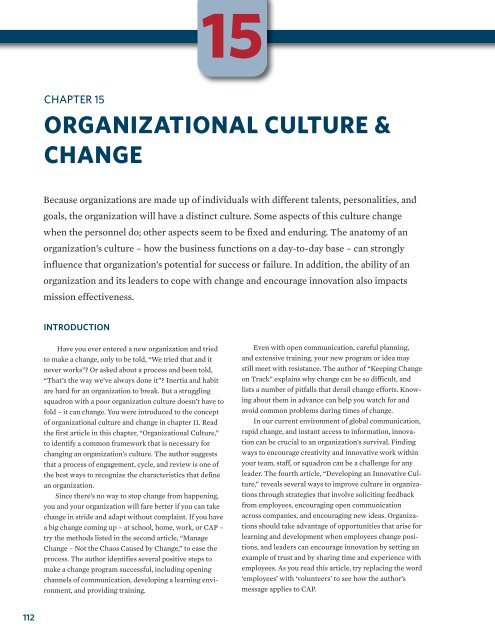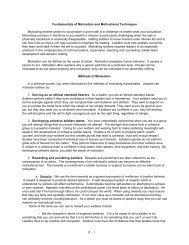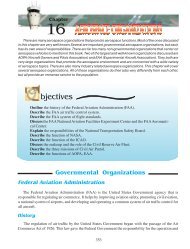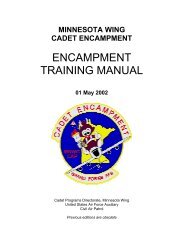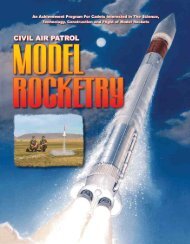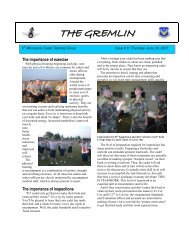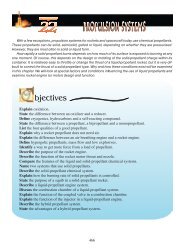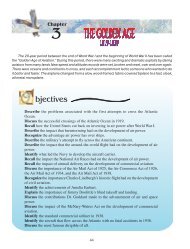LEARN TO LEAD - Civil Air Patrol
LEARN TO LEAD - Civil Air Patrol
LEARN TO LEAD - Civil Air Patrol
You also want an ePaper? Increase the reach of your titles
YUMPU automatically turns print PDFs into web optimized ePapers that Google loves.
15CHAPTER 15ORGANIZATIONAL CULTURE &CHANGEBecause organizations are made up of individuals with different talents, personalities, andgoals, the organization will have a distinct culture. Some aspects of this culture changewhen the personnel do; other aspects seem to be fixed and enduring. The anatomy of anorganization’s culture – how the business functions on a day-to-day base – can stronglyinfluence that organization’s potential for success or failure. In addition, the ability of anorganization and its leaders to cope with change and encourage innovation also impactsmission effectiveness.INTRODUCTIONHave you ever entered a new organization and triedto make a change, only to be told, “We tried that and itnever works”? Or asked about a process and been told,“That’s the way we’ve always done it”? Inertia and habitare hard for an organization to break. But a strugglingsquadron with a poor organization culture doesn’t have tofold – it can change. You were introduced to the conceptof organizational culture and change in chapter 11. Readthe first article in this chapter, “Organizational Culture,”to identify a common framework that is necessary forchanging an organization’s culture. The author suggeststhat a process of engagement, cycle, and review is one ofthe best ways to recognize the characteristics that definean organization.Since there’s no way to stop change from happening,you and your organization will fare better if you can takechange in stride and adapt without complaint. If you havea big change coming up – at school, home, work, or CAP –try the methods listed in the second article, “ManageChange – Not the Chaos Caused by Change,” to ease theprocess. The author identifies several positive steps tomake a change program successful, including openingchannels of communication, developing a learning environment,and providing training.Even with open communication, careful planning,and extensive training, your new program or idea maystill meet with resistance. The author of “Keeping Changeon Track” explains why change can be so difficult, andlists a number of pitfalls that derail change efforts. Knowingabout them in advance can help you watch for andavoid common problems during times of change.In our current environment of global communication,rapid change, and instant access to information, innovationcan be crucial to an organization’s survival. Findingways to encourage creativity and innovative work withinyour team, staff, or squadron can be a challenge for anyleader. The fourth article, “Developing an Innovative Culture,”reveals several ways to improve culture in organizationsthrough strategies that involve soliciting feedbackfrom employees, encouraging open communicationacross companies, and encouraging new ideas. Organizationsshould take advantage of opportunities that arise forlearning and development when employees change positions,and leaders can encourage innovation by setting anexample of trust and by sharing time and experience withemployees. As you read this article, try replacing the word‘employees’ with ‘volunteers’ to see how the author’smessage applies to CAP.112


